Asus A8R32-MVP Deluxe: First ATI RD580
by Wesley Fink on March 1, 2006 9:00 AM EST- Posted in
- Motherboards
Asus A8R32-MVP: Board Layout
Since the A8R32-SLI Deluxe is an upgrade to the current A8R-MVP, the best way to compare the two boards is to take a closer look at what has changed in the upgrade.
The only other layout change of any significance involves the PCIe slots. Asus has spread the 2 PCIe slots to a distance of 2 slots between the two x16 slots. This allows better video card cooling. It also requires a slight rearrangement of the available slots, but the total slots - 2 x16 PCIe, 1 x1 PCIe, and 2 PCI - remains the same.
If you look closely, you will see that the RD580 does not need a supplementary 4-pin Molex connection like the earlier 480, and that connector has been removed from the A8R32-MVP. We had no problems with stability of 2 video cards, even with dual X1900XT video cards, so the extra power connection is not necessary for stable dual video on the A8R32-MVP.
The rest of the updates to the A8R32-MVP Deluxe are not so obvious at first look.
The ALC882 has superb specifications, providing five 24-bit stereo DACs and three 20-bit stereo DACs driving the multimedia features. All DACs provide sample rates to 192kHz and up to 4 channels of microphone input are supported. Signal-to-Noise ratio is specified to be greater than 103dB. Realtek features the ALC882 as a premium HD part.
Another addition that justifies the Asus move of the A8R32-MVP to the Deluxe moniker is the addition of a second Gigabit LAN. Where the A8R has just the slower PCI Gigabit Ethernet, the A8R32 adds a second full-speed Gigabit LAN on the PCIe bus. This will be an important addition for some buyers.
The refinements to the A8R32-MVP Deluxe layout are subtle, but they improve on the already excellent design of the A8R-MVP. Asus has a reputation for paying attention to details in their board layouts, and they do not disappoint with the A8R32-MVP.
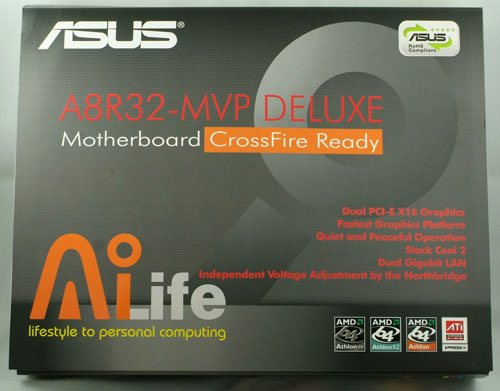
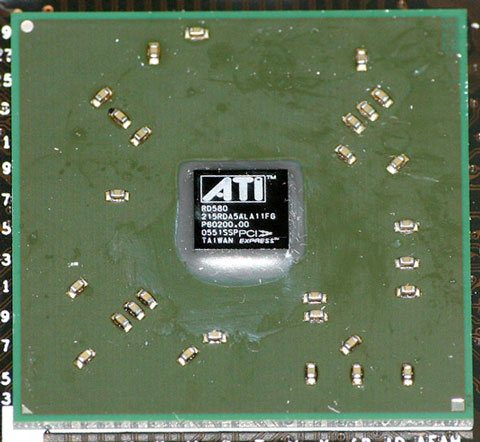
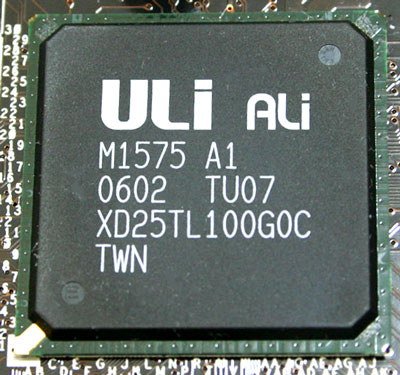
Since the A8R32-SLI Deluxe is an upgrade to the current A8R-MVP, the best way to compare the two boards is to take a closer look at what has changed in the upgrade.
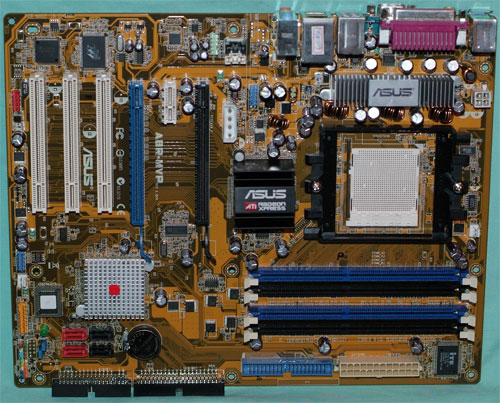
The only other layout change of any significance involves the PCIe slots. Asus has spread the 2 PCIe slots to a distance of 2 slots between the two x16 slots. This allows better video card cooling. It also requires a slight rearrangement of the available slots, but the total slots - 2 x16 PCIe, 1 x1 PCIe, and 2 PCI - remains the same.
If you look closely, you will see that the RD580 does not need a supplementary 4-pin Molex connection like the earlier 480, and that connector has been removed from the A8R32-MVP. We had no problems with stability of 2 video cards, even with dual X1900XT video cards, so the extra power connection is not necessary for stable dual video on the A8R32-MVP.
The rest of the updates to the A8R32-MVP Deluxe are not so obvious at first look.
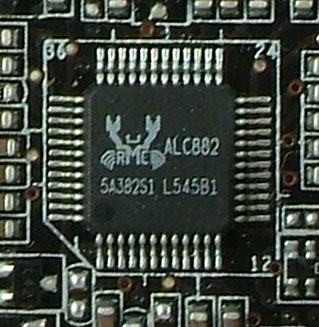
The ALC882 has superb specifications, providing five 24-bit stereo DACs and three 20-bit stereo DACs driving the multimedia features. All DACs provide sample rates to 192kHz and up to 4 channels of microphone input are supported. Signal-to-Noise ratio is specified to be greater than 103dB. Realtek features the ALC882 as a premium HD part.
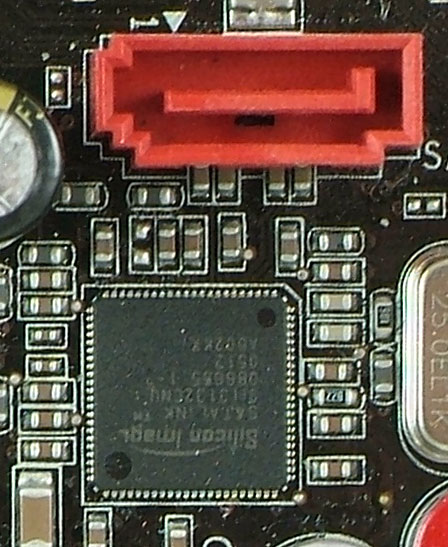
Another addition that justifies the Asus move of the A8R32-MVP to the Deluxe moniker is the addition of a second Gigabit LAN. Where the A8R has just the slower PCI Gigabit Ethernet, the A8R32 adds a second full-speed Gigabit LAN on the PCIe bus. This will be an important addition for some buyers.

The refinements to the A8R32-MVP Deluxe layout are subtle, but they improve on the already excellent design of the A8R-MVP. Asus has a reputation for paying attention to details in their board layouts, and they do not disappoint with the A8R32-MVP.


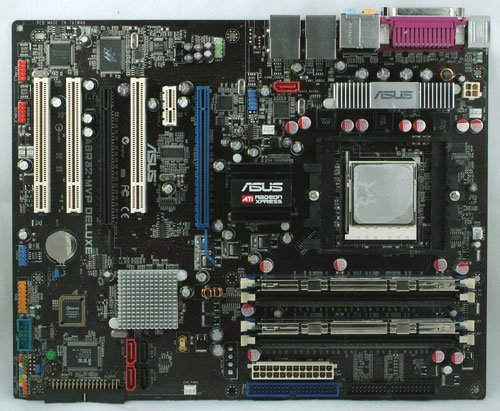








65 Comments
View All Comments
SuperStrokey - Friday, February 17, 2006 - link
i assume that was not the gtx512 was it? If so wowDeathBooger - Friday, February 17, 2006 - link
http://www.scan.co.uk/Products/ProductInfo.asp?Web...">http://www.scan.co.uk/Products/ProductInfo.asp?Web...If you do a currency conversion it's $217USD. Some lucky guy actually got to buy it before they were supposed to sell it. http://forums.overclockers.co.uk/showthread.php?t=...">http://forums.overclockers.co.uk/showthread.php?t=...
Egglick - Friday, February 17, 2006 - link
Why would you use two different videocards when benchmarking a motherboard?? This really tells us nothing about the motherboards performance in relation to the others, because you have another huge variable.Wesley Fink - Friday, February 17, 2006 - link
As we stated in the test setup we ran BOTH the 7800GTX and the X1900XT video card on the Asus A8R32-MVP. We reported both results so you could compare 7800GTX performance to the previous boards also tested with the 7800GTX. Since the X1900XT is the latest and fastest video card the results were included for Reference only - many would have asked for X199XT results if they were excluded.As someone else pointed out, when testing Dual X16 Video you have to run SLI on nVidia and Crossfire on ATI (or Intel).
andrewln - Friday, February 17, 2006 - link
because you can not run SLI in Crossfire motherboardstuteja1986 - Friday, February 17, 2006 - link
Why didn't Asus include the cool feel as they did with the ASUS A8N 32-SLI. Like the 8-Phase Power and the cool looking Fanless Motherboard cooling system.mino - Friday, February 17, 2006 - link
Just wondering. maybe 8-phase is a waste for ~60 watt Athlon64s. Also why do a fancy(an expensive) "cool looking Fanless Motherboard cooling system" when chipset is cool and doesn not need one at all???I.m glad someone has a sense and doesn't produce third central heater in the system(after CPU & GPU).
Hoping SB600 will be a good one.
Wesley Fink - Friday, February 17, 2006 - link
The RD580 chipset also ran very cool on this board, so there may not be the need for the more exotic passive heatpipe cooling used on the A8N32-SLI.Wesley Fink - Friday, February 17, 2006 - link
The A8R32-MVP was designed to sell for a lower price - probably around $130 to $150, where the A8N32-SLI was designed to sell for $200+. While the A8R32-MVP isn't 8-phase, it actually overclocked ba bit better and gave up nothing to the more expensive and excellent A8N32-SLI in performance. This board can also run dual X1900XT cards in Crossfire mode.tuteja1986 - Friday, February 17, 2006 - link
I wonder how much will it sell for and if it goes arround same price as Asus A8N 32-SLI (220ish). if it cost that much then i will end up buying DFI RD580 motherboard if its got no issue bugs like the 1st rev of DFI RD480 CRossfire.